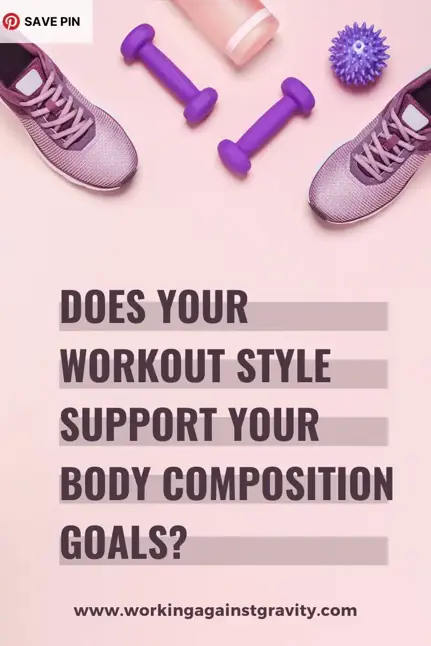“I’ve been training so hard, but I still don’t feel confident in my body.”
“I workout on the reg, but I’m not losing weight. What gives?”
“I want to get stronger, and I think I’m training enough. What am I doing wrong?”
Sound familiar?
At WAG, we’ve worked with over 30,000 people, so we’ve heard it all regarding frustration and questions about training style.
Advertisement
Let’s chat about some things to remember so your workout style supports your body composition goals.

Before digging in, its important to note and define a few things:
- When we say “body composition,” we’re referring to the ratio of fat to muscle in your body. Two people who are the same weight can have very different body compositions. This article digs in even more.
- Everyone’s bodies are different, and there are exceptions to the generalities below.
- At the end of the day, the “best” exercise for you is the exercise you enjoy, that makes you feel good, and that you can see yourself sticking with regularly.
Popular Exercise Styles and How They May Impact Body Composition
Running, Spinning & Other Cardio
These monostructural cardio exercises are great for fat loss. They elevate your heart rate for prolonged periods and burn calories quickly. That said, they’re usually not as effective in building lean muscle as resistance training.
So, if you’re chasing a leaner, toner look combining cardio with weight training is the key.
Advertisement
Resistance Training
Resistance training is exactly what it sounds like—with this exercise style, your body works against another force or weight, whether it is gravity (body weight exercises), dumbbells, a barbell, a kettlebell, or another piece of gym equipment.
Resistance training has been shown to have a more profound effect on muscle strength, size, and definition than strict cardio. Muscle is active tissue so someone with more muscle mass burns more calories. If you prefer and prioritize weight training, you’re at a body comp change advantage.
If you only resistance train (without adding monostructural movements) you will still burn fat—but it may take more time and happen more slowly.
Cross Training
This exercise style is a cross between monostructural movements and resistance training, making it one of the most effective exercises when the goal is weight loss and lean muscle gain.
Cross-training encompasses popular workout styles like CrossFit, Orange Theory, and general high-intensity interval training (HIIT). It can also include pairing resistance training sessions with a cardio sesh. Just keep in mind that heading into your resistance training workout, exhausted from cardio will impact your output. So, we generally recommend doing your strength work first.
Advertisement
Yoga
There are many different styles of yoga—some are slower and more restorative (ex: slow flow or yin), and others are more intense and really get your heart rate up (power/vinyasa). A regular yoga practice can help burn fat and gain muscle, but outside of running, this is going to be the longest road to muscle gain.
How Does Nutrition Fit Into This?
Your nutrition directly impacts your athletic performance and your body composition. If you want to lose weight, gain muscle, or do both simultaneously, your workout style is only one part of the equation.
If you want to ensure your nutrition plan complements your goals, that is what we’re here for!
Advertisement







